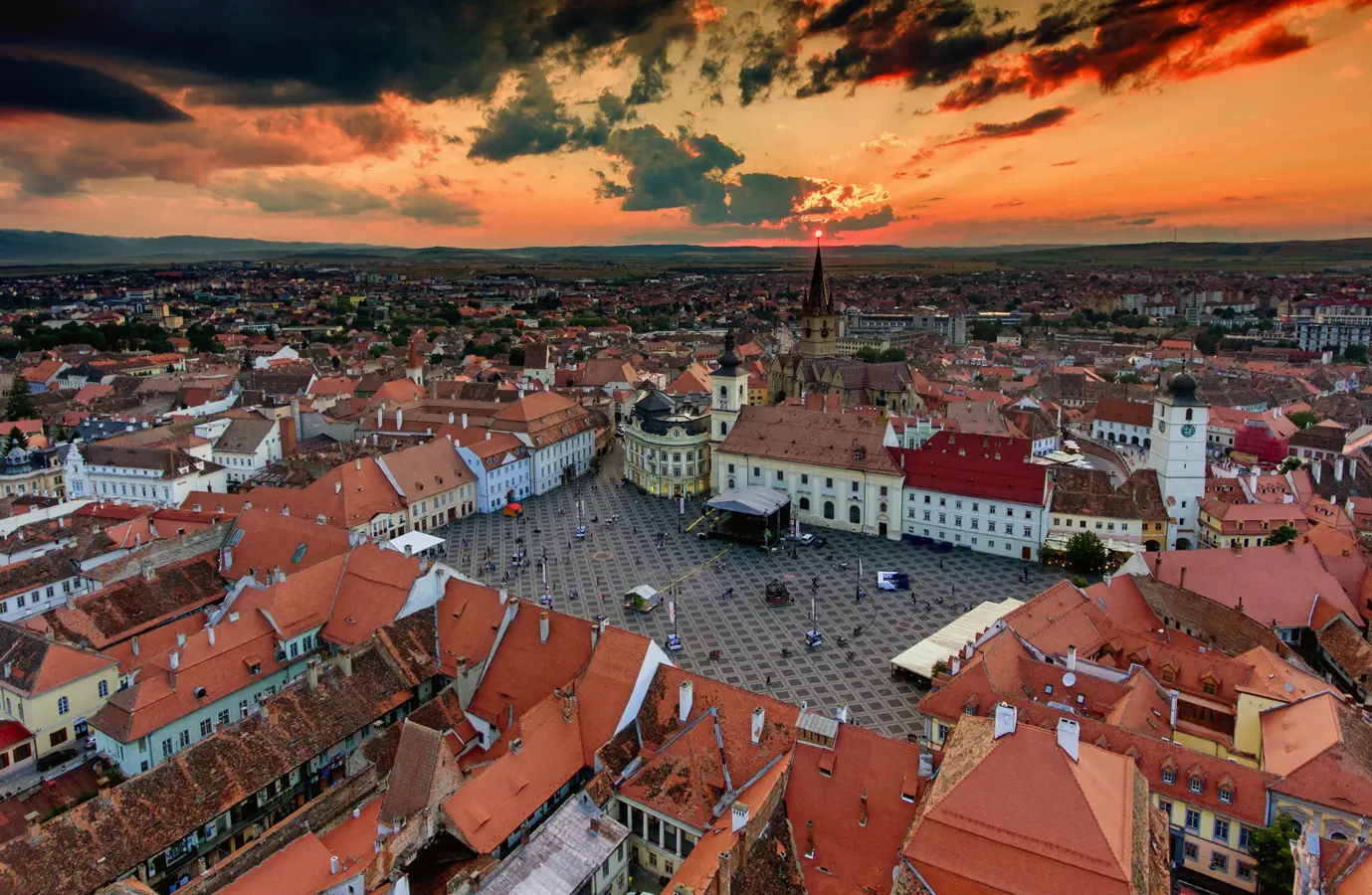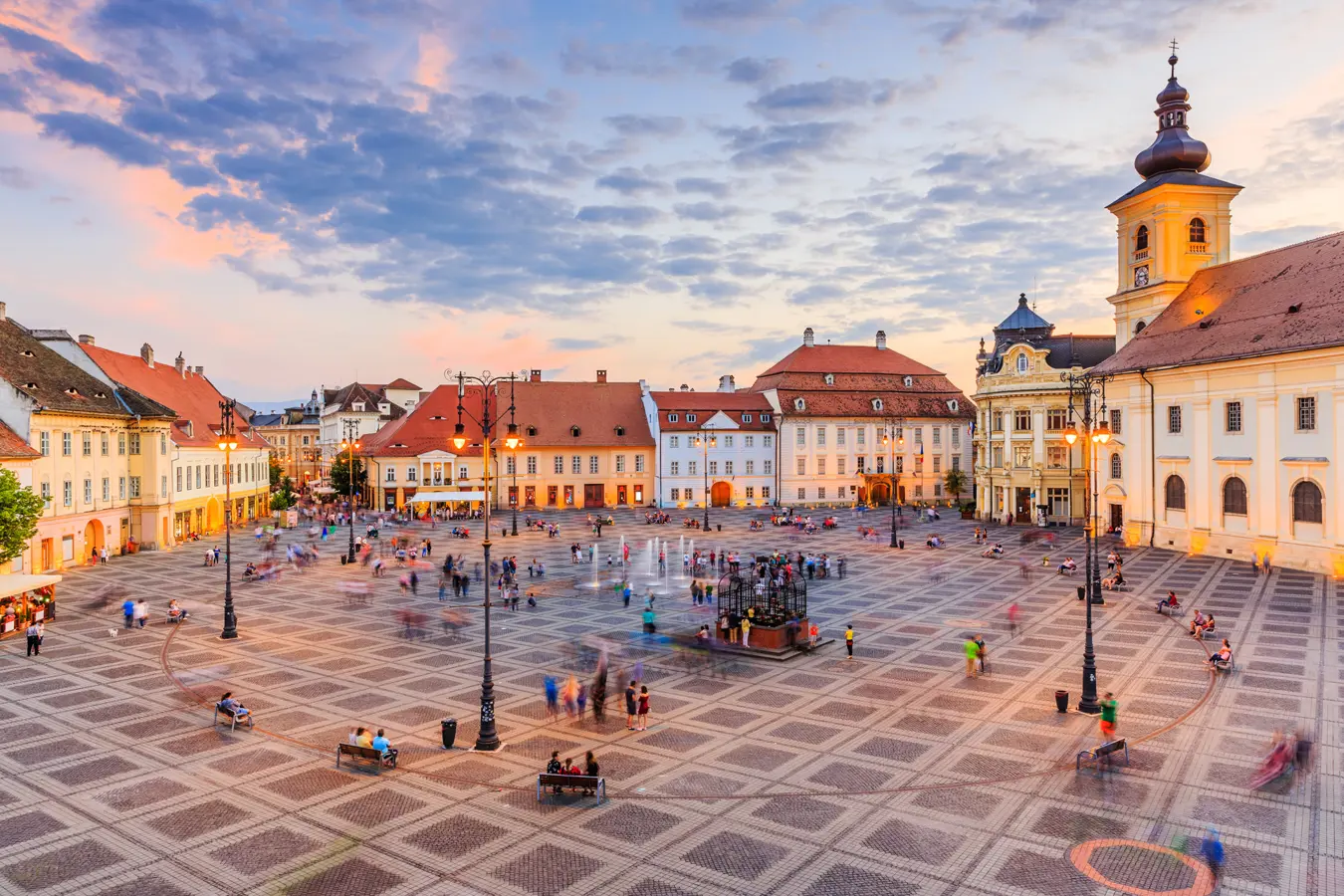Sibiu, divided in two, united to Europe
Rich in history, in the heart of Transylvania, the city of Sibiu was founded in Roman times with the name “Cibium”. As the eastern terminus of the postal network, throughout the centuries Sibiu flourished as an economic, cultural, political and religious centre (today it is still the third most important Episcopal seat of the Romanian Orthodox Church), and became the city most connected to the culture of central Europe.

City landscape
Sibiu is divided into two parts: the Lower Town (Orasul de jos), home to many monuments and attractions, and the Upper Town (Orasul de sus), the historic centre.
The Lower Town lies between the River Cibin and the hill, and developed around ancient fortifications. The roads are long and rather wide compared to other Medieval cities, while the building are unusually low and covered by steep roofs. The Lower Town is also home to the oldest church in Sibiu, built in 1386.
The Upper Town is organised around three squares, with a series of roads that follow the line of the hill.
The Great Square (Piata Mare) is the largest in the city and the centre of city life. On the north-western side lies the baroque Brukenthal Palace, formerly residence of the Governor of Transylvania and today seat of the National Museum. Alongside is the so-called “Blue House”, bearing the ancient coat of arms of the city on its facade. On the northern side of the square is the Church of the Jesuits, an Art Nouveau style building housing the offices of the mayor, and the “Council Tower”, one of the city’s symbols, alongside the, the old meeting place of the city council.

The Great Square, with the characteristic "Blue House"
The Small Square (Piata Mica), connected to the Great Square by small alleyways, is curved along its north-west side. Passing under a small metal bridge, the Strada Ocnei leads to the Lower Town. The main buildings facing the square include the “House of the Arts”, an arched building formerly belonging to the Butchers’ Guild, and “Luxemburg House”, a Baroque four-storey building, former seat of the Goldsmiths’ Guild.

The Evangelical Lutheran Church
Huet Square is also found in the historic centre. It is overlooked by two important buildings: the Evangelical Lutheran Church, built in the fourteenth century, and the Brukenthal High School.
Sibiu preserves extensive fortifications and multiple walls were built around the city, mostly of brick. The entire system is connected via a labyrinth of tunnels and passageways, designed to ensure transport between the city and lines of defence. The most interesting of these connections is the “Passage of the Stairs” (Pasajul Scarilor), which connected the Upper Town with the Lower Town. To the south of the city, a magnificent oak forest is home to an architectural museum, a lake and a zoo.
Text by Luca Lembi
Photos: © Sisterscom.com, Shutterstock
Copyright © Sisterscom.com
All rights reserved.
Updated June 2019
Video: www.romania.travel
Tourism Board
www.romania.travel
Where to sleep in Sibiu

Sibiu is a welcoming city and offers different possibilities for accommodation.
To find the ideal hotel and the best offers you can do a search for the stars but also for districts or landmarks.
STARS
Hotels for stars, differentiated by type of services:
WHERE TO GO
Monuments

"HOLY TRINITY" METROPOLITAN CATHEDRAL

"HOLY TRINITY" ROMAN-CATHOLIC CHURCH

EVANGELICAL CHURCH

COUNCIL TOWER

LIER BRIDGE

DEFENSE TOWER AND WALLS
Museums

BRUKENTHAL MUSEUM

ASTRA MUSEUM
Excursions

SIBIU ZOO

PĂLTINIŞ RESORT

SIGHISOARA

BRASOV - DRACULA CASTLE
Luxury
You might be interested in
Airports nearby Sibiu














